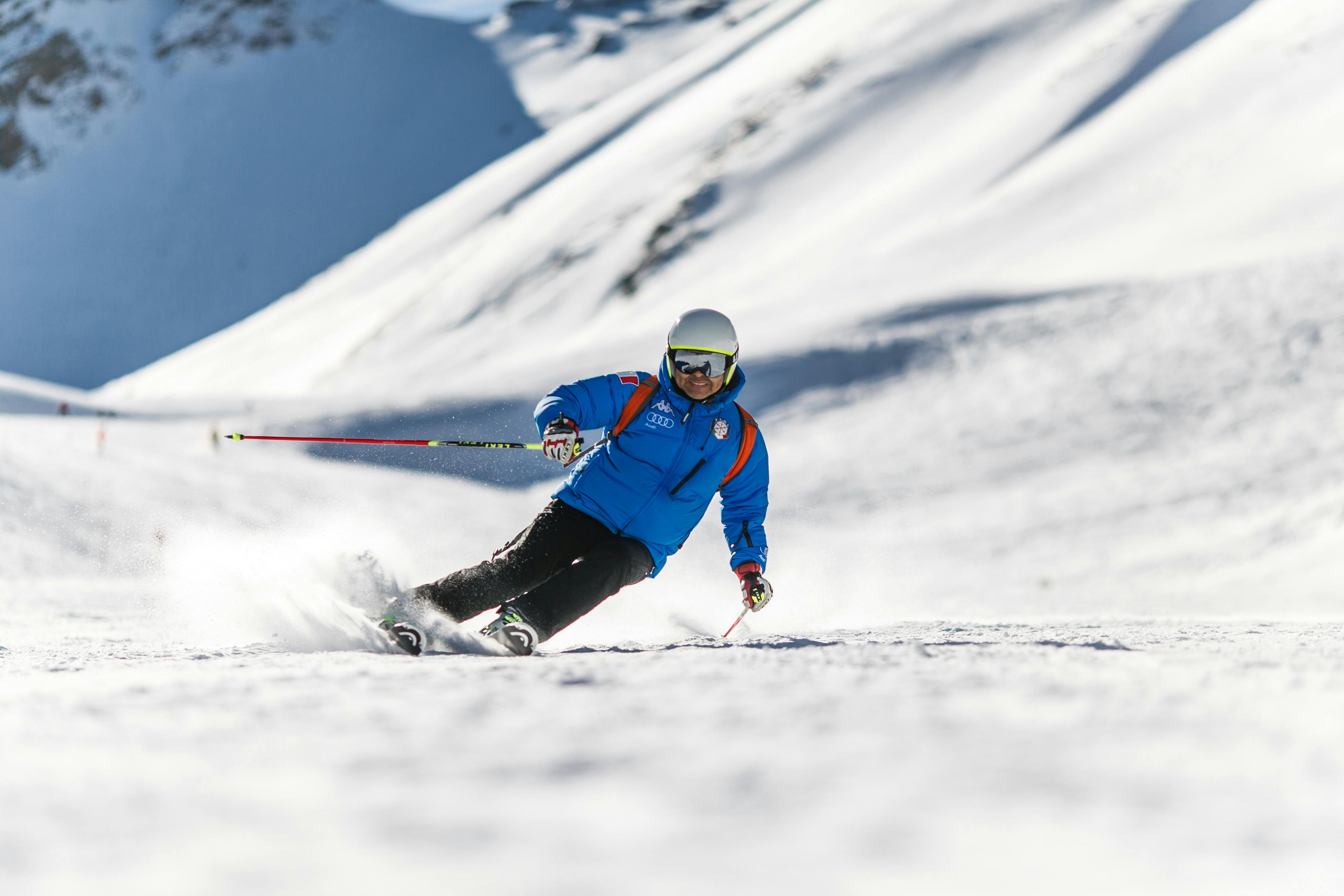From Slopes to Stocks: A Trader’s Guide to Winter Market Strategy
From Slopes to Stocks: A Trader’s Guide to Winter Market Strategy

Another year is over in the blink of an eye, and just like that, we’re trading out swimsuits for snowboards. While holiday vacations might be over, ski resorts are already booking up from January to springtime as ski season is officially upon us. As stock traders recover from their holiday hangovers, they can stand to learn a thing or two from the ski bunnies and shredders this season, applying similar tips, tricks, and shifts to their mindset to thrive in this seasonal transition. Understanding these shared principles can help traders develop more disciplined and profitable strategies during winter trading.
Knowing Your Terrain
As winter blankets the mountains in snow, skiers and traders face similar challenges in navigating treacherous terrain while seeking optimal performance. Just as skilled skiers analyze trail conditions before committing to a run, successful traders must master the art of reading market terrain before making their moves. Technical indicators serve as trail maps, guiding traders through market conditions with tools like moving averages and momentum oscillators highlighting potential paths.
Volume analysis functions similarly to assessing snow conditions—high volume confirms trend strength, just as packed powder supports confident runs, while low volume warns of potential volatility, much like unstable snow conditions. Support and resistance levels mirror elevation changes on the mountain, with traders needing to navigate these technical levels as carefully as skiers traverse challenging slope transitions.
Risky Business
Preparation in both disciplines demands meticulous attention to detail. Before opening positions, traders must verify their tools’ functionality – from charting platforms to order execution systems – just as skiers inspect their equipment before hitting the slopes. Market conditions, like weather patterns, require constant monitoring and strategy adaptation. Stock selection also parallels choosing appropriate trails—beginners should stick to steady, established companies (green runs), while experienced traders might seek more volatile opportunities (black diamonds). This careful preparation and terrain reading create the foundation for successful execution in both skiing and trading. Knowing your lane can help you gain confidence to create a natural upward momentum.
Just as skiers must honestly assess their ability before attempting double-black diamonds, traders need to align their strategies with their experience level and risk tolerance. A novice trader attempting complex momentum trades mirrors a beginner skier on an expert run – both scenarios likely end poorly. The most successful practitioners in both fields maintain strict risk protocols while pushing performance boundaries, understanding that capital preservation, like personal safety, must always come first.
Optimizing Your Performance

Optimizing trading performance, like mastering downhill technique, requires a sophisticated understanding of momentum and timing. As expert skiers read the mountain to choose the perfect entry points for each run, successful traders identify optimal market entry opportunities through technical analysis and volume patterns. The art of portfolio balance mirrors weight distribution in skiing – too much concentration in one area leads to dangerous instability. Traders must maintain proper position weightings across different sectors and strategies, just as skiers distribute their weight across their skis to maintain control at high speeds. This balanced approach to risk and momentum maximizes performance while minimizing potential catastrophic losses.
Seasonal Strategy Shifts
Winter market patterns present unique trading opportunities, mirroring winter sports’ seasonality. The January Effect typically drives small-cap outperformance early in the year, while holiday trading volumes create distinct patterns around Christmas and New Year’s. Sector rotation during winter often favors consumer discretionary and retail stocks through December, followed by technology and healthcare in January. The winter sports industry offers compelling seasonal plays, from equipment manufacturers like Vail Resorts (MTN) and ski equipment maker Black Diamond (BDE) to resort operators and tourism-related stocks. Companies in this sector typically see the most substantial earnings during Q1 and Q4, with weather conditions and tourism trends driving performance. Smart traders look for opportunities in direct plays and ancillary businesses like lodging REITs and transportation companies serving major ski destinations.
Execution and Common Pitfalls
Just as a skier’s success depends on choosing the perfect moment to begin a descent, precise trade execution requires masterful timing of entries, position management, and exits. Successful traders, like skilled skiers, must read momentum and conditions to time their entries, adjust position size, control downhill speed, and plan exit strategies as carefully as plotting a safe stopping zone.
Position management requires constant attention and adjustment. Tightening stops as profits accumulate mirrors reducing speed on challenging terrain, while scaling out of positions resembles gradually slowing your approach to the lift line. Just as overconfident skiers risk catastrophic falls by overestimating their abilities, traders can severely damage their portfolios through excessive risk-taking and misreading market conditions.
Common pitfalls in both disciplines stem from ignoring warning signs – whether deteriorating weather conditions on the slopes or weakening market indicators in trading. Misusing equipment and tools lead to poor execution: skiers with improperly adjusted bindings face similar dangers to traders relying on misconfigured technical indicators or poorly placed stop orders. Success in both fields requires honest self-assessment, respect for conditions, and proper equipment utilization – rushing into advanced situations without proper preparation inevitably leads to painful lessons.
Measuring success in trading, like tracking progress in skiing, requires comprehensive performance monitoring and continuous skill development. Just as skiers time their runs and analyze their technique, traders must maintain detailed performance metrics, tracking not just returns but risk-adjusted performance and consistency of execution. Progress comes through deliberate practice and systematic improvement – whether it’s through mastering more challenging runs or successfully implementing more sophisticated trading strategies. The ultimate measure of success in both disciplines isn’t just raw performance but the ability to consistently generate positive results while maintaining appropriate risk controls.
Mastering Both Mountains and Markets

So whether conquering black diamond runs or navigating volatile markets, success comes from mastering fundamental risk management principles, timing, and technical execution. As we venture into the winter trading season, the parallels between skiing and trading remind us that consistent performance comes from disciplined preparation, honest skill assessment, and strategic adaptation to changing conditions. Just as no skier becomes an expert overnight, trading mastery requires continuous learning, careful position management, and respect for market conditions.
By applying these slope-tested principles to your trading strategy and leveraging the right market analysis tools, you can refine your approach to winter trading opportunities. Remember: success comes not from occasional spectacular runs but from consistently executed strategies that balance risk and reward, whether on the mountain or in the markets. To learn more about implementing these tools in your practice, visit Trade Ideas today.
